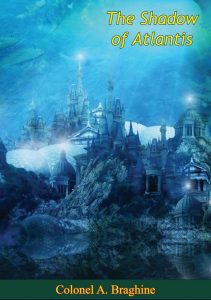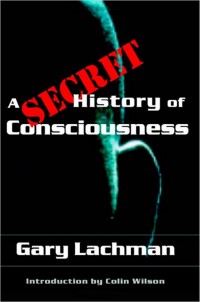The Shadow of Atlantis
The Shadow of Atlantis, by Colonel A. Braghin (Aleksandr Pavlovich Bragin, 1878-1942), was first published in the United States by E.P. Dutton & Co., Inc., New York, in 1940. According to the WorldCat online library, The Shadow of Atlantis has been published from 1938 to 1997 in 25 editions and in five languages, English, Spanish, French, Portuguese, and German. The book has 288 pages consisting of the Author’s Preface, 13 Chapters, 25 Illustrations, a Postscriptum, a Bibliography in six languages (from ancient times and the nineteenth and early twentieth centuries), and an Index.
Colonel Braghine was Russian and his military history is listed in a Manuscript that is available in the Columbia University Library. He served in the Russian Imperial Army from 1899 until the early 1920’s. He was in the Boxer Rebellion in China, 1899-1901, the Russo-Japanese War, 1904-1905, World War I, 1914-1918, and, lastly, in the Russian Civil War. He had been appointed head of the White Military Mission to Iran in 1920. “White” refers to those who were in opposition to the “Red” Bolsheviks.
He probably withdrew from military service in 1921, because he left Russia and became involved in the 1921 White Russian immigration to Brazil and South America. From an internet page on this subject:
“White Russians. In April 1921 on the steamer ‘Rion’ came the first mass group of Russian immigrants and then on July 12th on steamers “Aquitaine” and “Provence” arrived groups under the command of Colonel KK Bragin totaling approximately 600 people. One of the last groups was led by Colonel VG Zhilinskiy and totaled 1200 people. In total about 3000 “Whites” arrived in Brazil. These immigrants settled mainly in Sao Paulo and Rio de Janeiro.”
Could the Colonel KK Bragin noted above have been the author of The Shadow of Atlantis? Yes, according to the research provided by the Find Russian Heritage site (address below). Colonel KK “was Alexander Pavlovich Bragin indeed. Depending on the source, different initials were used.” He is number 16 in the photo from the aforementioned site.
Around 1922 or 1923, Colonel Braghine undertook what could be the most exhaustive scholastic and evidential (if not to say Herculean) research ever done by one individual regarding the subject of Atlantis, which explains the continued success of the book. This book is a must for Atlantologists, and it should also be on the shelves of scientists, for example, geologists, anthropologists, and archaeologists. Each of the 288 pages – including the first page – is heavy with valuable information: prehistoric, primitive or tribal, Babylonian, Biblical, pre-Christian (Plato’s well-known accounts from Timaeus and Critias), Hindu, Native American, and early twentieth-century history and scientific discovery. The book’s Index lists 553 names and references, which still does not cover the exhaustive amount of information in the book. The 25 illustrations consist of the photographs that the author took on his travels through Mexico and Central and South America, including Teotihuacan, San Salvador, Honduras, and Lima and Paracas in Peru. He places what is perhaps his favorite photo at the front of the book, with the description: Statuettes Found in San Salvador, Have we here an archaic Egyptian style? This would confirm a prehistoric connection between Egypt and Central America.
The author states in his Preface that he does not exclude clairvoyance or the clairvoyant accounts that came out of the Theosophical movement but describes most of these as “more or less successful fictions, as they do not provide any information capable of scientific control.” It is not known whether he had access to Rudolf Steiner’s books and lectures regarding clairvoyance, Atlantis and the Great Atlantean Epoch, and Steiner’s contributions in these areas of research are not included or referenced.
Some of the subjects in Colonel Braghine’s encyclopedic book include Lemuria and Gondwanda, the hypothesis of floating continents, Plato’s indications of 9500 BC as the date of the major catastrophe, astronomy, the mystery of the Moon (“has it joined us comparatively recently?”), the remnants of Atlantis found in the Azores and Canary Islands, the island of Poseidonis (the main portion of the Atlantean empire), the Tree of Life, the mysterious metal used in the temples and buildings of Atlantis called oreichalkos – which the author suggests is hardened brass or bronze – the Atlantic Ridge, the Mayans, and the original banana bush, a true benefactor necessary for mankind’s nutrition, and – according to a Hindu source – brought by Manu from another celestial body.
On page 138 of Chapter V, the author disagrees that the disasters and floods came as punishment or vengeance inflicted by the gods on humanity. “Everywhere there was a man,” he writes, “or demi-god, who enjoyed the confidence of the gods and was warned in time concerning the coming catastrophe… the kernel of all these traditions must have been bequeathed to prehistoric mankind by some race which produced the hero of the Flood, and in this connection the idea of the Atlanteans involuntarily haunts my mind….”
From Rudolf Steiner on Atlantis: “… With their will the Atlanteans could control the germinal forces in which deep secrets lie hidden – the forces of air and water. Fire was beyond their control… When the will of the Atlanteans turned to evil and used these forces for egotistical purposes, they simultaneously evoked the forces of water and of air, released them, and ancient Atlantis perished as a result. The continents came into existence through the cooperation of the elements and human beings.” Eventually, human beings “could see nothing except the mineral, inorganic element, and that meant that magical powers vanished ever more completely from them.”
After serving through some of the most tragic events of the twentieth century as a military officer, Colonel Braghine set out on a long search for the lost, magical world that he knew had existed in the remote past. In the book’s Postscriptum he concludes by painting “an imaginary picture of this catastrophe,” and having made the decision to avoid knowledge derived from clairvoyance, he suggests that the cause of the catastrophe could have been a comet that first appeared in the constellation of Cancer. As well, it must be remembered that, during his lifetime in Russia (he would have been around thirty years old at the time) there occurred the Tunguska event – the airburst of a comet or an asteroid – in Eastern Siberia in 1908.
– Review by Martha Keltz
References:
Earlier editions of The Shadow of Atlantis available on Amazon.com have become very expensive, but Literary Licensing has recently published the exact same book at less cost. See www.LiteraryLicensing.com
The paragraph, White Russians, is from the Find Russian Heritage site, from an article in Russian by A.A. Khisamutdinov, at http://www.ilaran.ru/?n=122
The Find Russian Heritage site is at http://www.findrussianheritage.com
The quotation by Rudolf Steiner is from Atlantis, The Fate of a Lost Land and Its Secret Knowledge, page 38, “Etheric Technology: Atlantean ‘Magic’ Powers,” published by Sophia Books, Imprint of the Rudolf Steiner Press, 2001, 2007. The original source was Rosicrucian Esotericism, New York, 1978, translated from GA 109/111 in the edition of Steiner’s original work.





